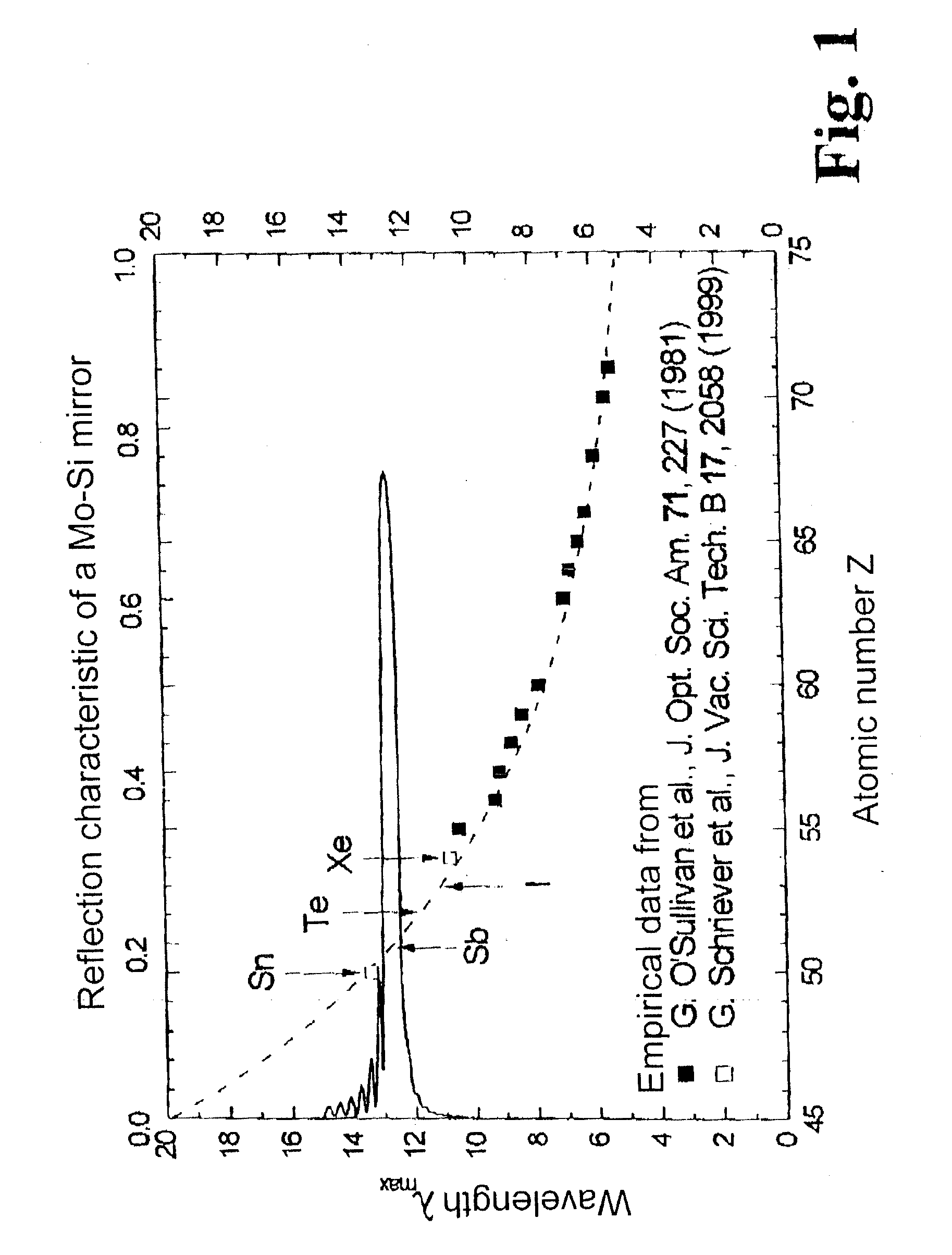Method for generating extreme ultraviolet radiation based on a radiation-emitting plasma
a radiation-emitting plasma and radiation-generating technology, which is applied in the field of generating extreme ultraviolet radiation based on radiation-emitting plasmas, can solve the problems of less suited as a target material for laser-induced plasmas, xenon has the disadvantage of very high cost, and the disadvantage of liquid use, etc., to achieve the effect of increasing the technical and monetary expenditure for plasma generation
- Summary
- Abstract
- Description
- Claims
- Application Information
AI Technical Summary
Benefits of technology
Problems solved by technology
Method used
Image
Examples
second example
[0038] Due to the physical characteristics of tellurium and antimony, numerous chemical compounds containing tellurium or antimony can be resorted to for application in gas discharge sources. Therefore, additional chemical compounds containing iodine, tellurium or antimony are suggested as target materials. Gaseous IF.sub.7 or IF.sub.5 will emit additionally intensive emission lines of fluorine at 12.8 nm, while solid lithium-iodide (LiI) produces an additional emission line of lithium at a wavelength of 13.5 nm.
[0039] Further, compounds of the elements of the fifth period of the periodic table of elements suggested in the first example are suitable for the described purposes, e.g., tellurium-iodide or antimony-iodide.
[0040] Besides an increased emission characteristic in the longer-wave EUW range (above 12.4 nm) which is better adapted to currently available mirror optics--in accordance with the reflection characteristic shown in addition in FIG. 1--a considerable cost savings is a...
PUM
 Login to View More
Login to View More Abstract
Description
Claims
Application Information
 Login to View More
Login to View More - R&D
- Intellectual Property
- Life Sciences
- Materials
- Tech Scout
- Unparalleled Data Quality
- Higher Quality Content
- 60% Fewer Hallucinations
Browse by: Latest US Patents, China's latest patents, Technical Efficacy Thesaurus, Application Domain, Technology Topic, Popular Technical Reports.
© 2025 PatSnap. All rights reserved.Legal|Privacy policy|Modern Slavery Act Transparency Statement|Sitemap|About US| Contact US: help@patsnap.com


